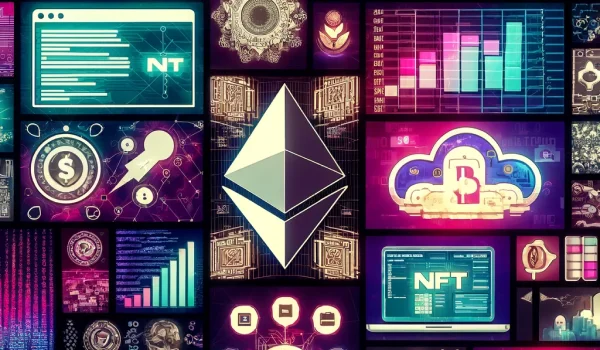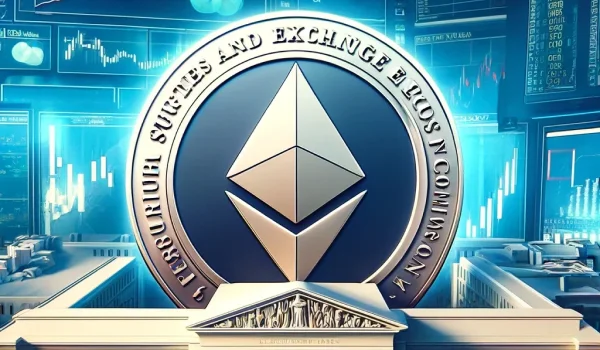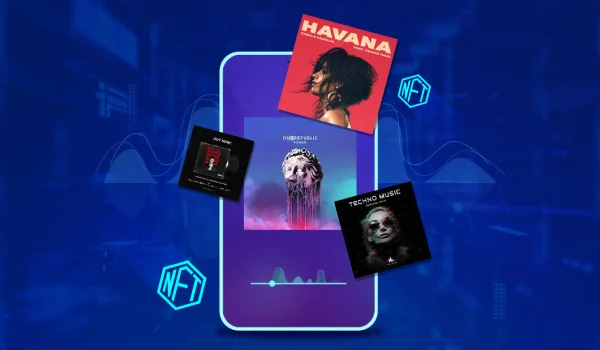“Wrapped Ether,” or simply WETH, is a form of token in a wrapped form representing ETH. The value of ETH is equivalent to ETH. You can also redeem it at any time for ETH through the process known as “unwrapping.” You can use WETH to enable some extra functionality on dApps such as making bids or offers.
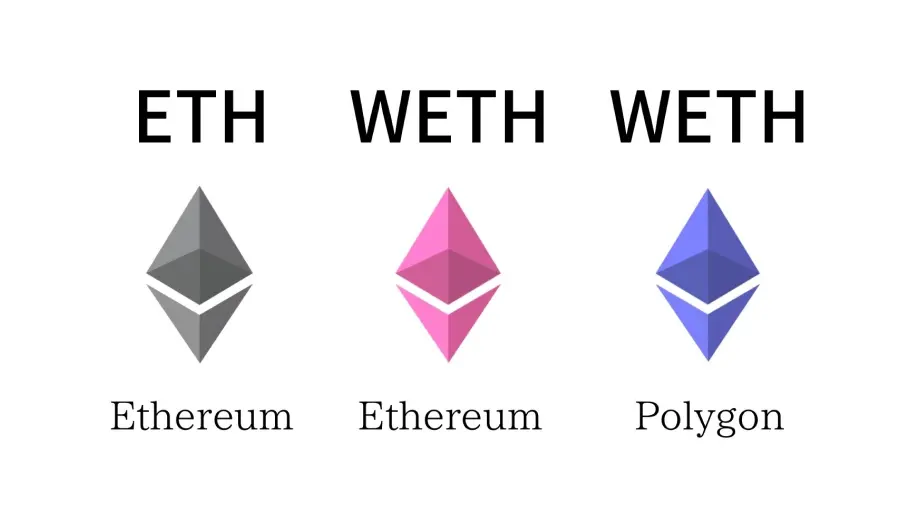
Black Ether = Classic; Red Ether = ERC-20 wrapped; Purple Ether = Polygon network
WETH at a Glance
WETH is a method of wrapping Ether that can be used for specific dApps functionalities. On a much deeper level, WETH functions by various transactional standards or ERC-20 compared to ETH.
You can use it where you can’t use ETH, such as in dApps auctions. WETH turns ETH into something with more flexibility but of equivalent value.
ETH vs. WETH: What’s the Difference?
Ethereum blockchain’s native cryptocurrency is ETH. WETH is ETH’s version that is wrapped to allow added functionality.

How WETH Works
When wrapping ETH and turning it into WETH, the user must send a specific ETH amount to a decentralized smart contract designed for creating WETH. This smart contract keeps the ETH in reserve. It also mints WETH tokens in equal amounts for the user.
The WETH tokens will be handed over to the user. After the user sent their ETH and the smart contract verifies it, the smart contract will transfer an equivalent amount of WETH tokens to the wallet of the user. One can use the WETH tokens for Ethereum blockchain transactions similar to other ERC-20 tokens.
If the user wishes to convert back their WETH to ETH, they can send back the WETH tokens to the smart contract that burns the WETH tokens. They will also receive in return an equal ETH amount. The process is known as unwrapping and is a process similar to wrapping but this time, in reverse.
How to Wrap ETH into WETH
You can use your wallet to convert ETH into WETH. ETH is often directly wrapped through the wallet provider or with the use of a decentralized exchange. You need to deposit ETH if your wallet doesn’t have sufficient native ETH. To do this, choose the Deposit option and specify the ETH amount you like to deposit.
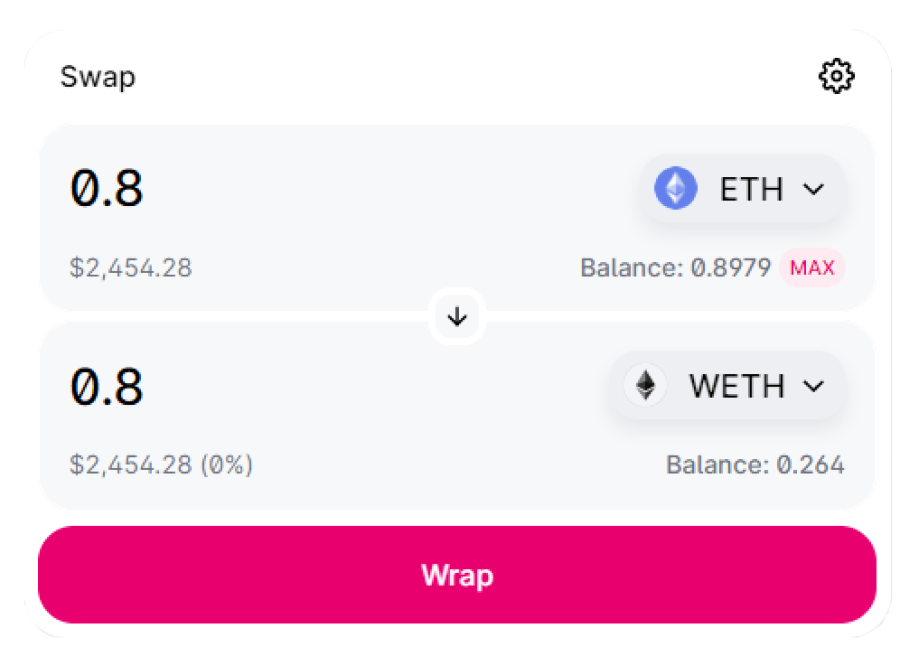
Swap on the Uniswap
After your ETH arrives in your wallet, you just need to choose to Wrap option to wrap it into WETH. Doing so will directly start a transaction on the blockchain wherein your ETH is sent to the decentralized smart contract. This smart contract will also mint an equal WETH amount for you.
Once you’ve wrapped your ETH into WETH, it’s now possible to start using it to make offers on Ethereum dApps. Your WETH can also be unwrapped back into ETH at any time. You just need to choose the Unwrap option and specify the WETH amount you like to unwrap.
How to Use WETH in Auctions
Here are the steps involved in using WETH in auctions:
1. Look for the auction.
After the WETH arrives in your wallet, start browsing the actions available and look for the one that you like to bid on.
2. Place the bid.
Choose the option to Place a bid on WETH and indicate the specific WETH amount you wish to bid. You should wrap more ETH or buy WETH from an exchange if your wallet doesn’t contain enough WETH yet.
3. Confirm the transaction.
Once you have finished placing your bid, a prompt will show up for confirmation of the transaction. You need to sign it using your Ethereum wallet to do this. You can repeat the above steps to place a higher bid if someone outbids you.
4. Finish the sale.
You need to pay the amount of the winning bid in WETH if you are the highest bidder after the auction ends. The item will then be transferred over to your wallet after confirmation of your payment.
Top Reasons to Use WETH
You can use WETH to make offers or transactions based on auctions. Although ETH requires the users to send payments during the transaction, WETH allows the creation of a pre-authorized offer or bid on an NFT.
This can then be completed the moment the buyer decides to accept it. This also allows the user to make offers or bids on various NFTs with the use of a similar WETH.
WETH as well as other wrapped currencies rose to popularity due to the early token contracts’ low interoperability. Most people used smart contracts for the creation and sale of fungible tokens during the early days of Ethereum.
However, there weren’t any unifying standards that the new tokens were required to follow. It led to a mess of issues and incompatibilities.
It was the case until ERC-20 was introduced in 2015. The standards implemented a set of functions that all tokens should execute to make sure that they are compatible with other tokens. It also improved the network’s reliability and security since the standardization allowed developers to establish the best practices.
However, since ETH predates these ERC-20 standards, it also means that it is not compliant with them. But WETH is compliant with ERC-20 and since it is an ETH representation at equivalent value, you can use it in places where you can’t otherwise use ETH.
Can You Lower Gas Fees with WETH?
There are some situations where you can potentially lower gas fees with WETH although it still depends on the use case. For your information, gas fees are payments required for the execution of blockchain transactions.
Every time users trade on the Ethereum blockchain using different tokens, they typically need to make several transactions. Every action will incur a gas fee, which includes wrapping ETH. However, there are some instances when the use of WETH can help lower the number of required transactions for completing a transaction which can help them save on gas fees in turn.
FAQ
Do other wrapped tokens exist?
Yes, aside from WETH, other wrapped tokens include WBTC or wrapped Bitcoin, WLTC or wrapped Litecoin, WMATIC or wrapped Matic, and WDOT or wrapped Polkadot.
Does WETH’s value change?
WETH’s value is pegged to ETH’s value, which means that it matches that of ETH all the time.
Where can you use WETH?
You can use WETH to bid in NFT auctions, make offers for NFT purchases, and other purposes which depend on the specific dApp used.


 5 mins read
5 mins read